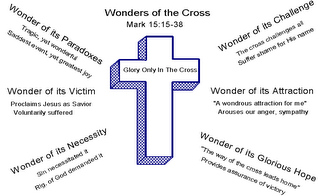LUTHER 1527 The Arian and Semi-Arian Reaction, A.D. 325-361
 LUTHER 1527
LUTHER 1527He who is unwilling to believe the words of God need not demand anything further from me. So I do enough if I prove that it is not contrary to God’s Word, but consistent with Scripture.-Martin Luther
The Arian and Semi-Arian Reaction, A.D. 325-361
The victory of the council of Nicaea over the views of the majority of the bishops was a victory only in appearance. It had, to be sure, erected a mighty fortress, in which the defenders of the essential deity of Christ might ever take refuge from the assaults of heresy; and in this view it was of the utmost importance, and secured the final triumph of the truth. But some of the bishops had subscribed the homoousion with reluctance, or from regard to the emperor, or at best with the reservation of a broad interpretation; and with a change of circumstances they would readily turn in opposition. The controversy now for the first time fairly broke loose, and Arianism entered the stage of its political development and power. An intermediate period of great excitement ensued, during which council was held against council, creed was set forth against creed, and anathema against anathema was hurled. The pagan Ammianus Marcellinus says of the councils under Constantius: “The highways were covered with galloping bishops;” and even Athanasius rebuked the restless flutter of the clergy, who journeyed the empire over to find the true faith, and provoked the ridicule and contempt of the unbelieving world. In intolerance and violence the Arians exceeded the orthodox, and contested elections of bishops not rarely came to bloody encounters. The interference of imperial politics only poured oil on the flame, and embarrassed the natural course of the theological development.
The personal history of Athanasius was interwoven with the doctrinal controversy; he threw himself wholly into the cause which he advocated. The question whether his deposition was legitimate or not, was almost identical with the question whether the Nicene Creed should prevail.
Eusebius of Nicomedia and Theognis of Nicaea threw all their influence against the adherents of the homoousion. Constantine himself was turned by Eusebius of Caesarea, who stood between Athanasius and Arius, by his sister Constantia and her father confessor, and by a vague confession of Arius, to think more favorably of Arius, and to recall him from exile. Nevertheless he afterwards, as before, thought himself in accordance with the orthodox view and the Nicene creed. The real gist of the controversy he had never understood. Athanasius, who after the death of Alexander in April, 328, became bishop of Alexandria and head of the Nicene party, refused to reinstate the heretic in his former position, and was condemned and deposed for false accusations by two Arian councils, one at Tyre under the presidency of the historian Eusebius, the other at Constantinople in the year 335 (or 336), and banished by the emperor to Treves in Gaul in 336, as a disturber of the peace of the church.
HISTORY OF THE CHRISTIAN CHURCH Schaff Volume 3 NICENE AND POST-NICENE CHRISTIANTY A.D. 311-600
(Pages 632-633)

1 Comments:
Dear Bro. Sal,
I have started to blog about my thoughts on some themes present in Calvinism.
I learn history through your blog, thanks.
Peace be with you
Lito
Post a Comment
<< Home